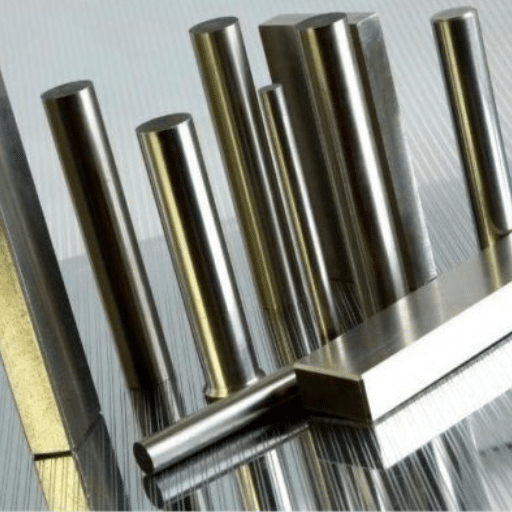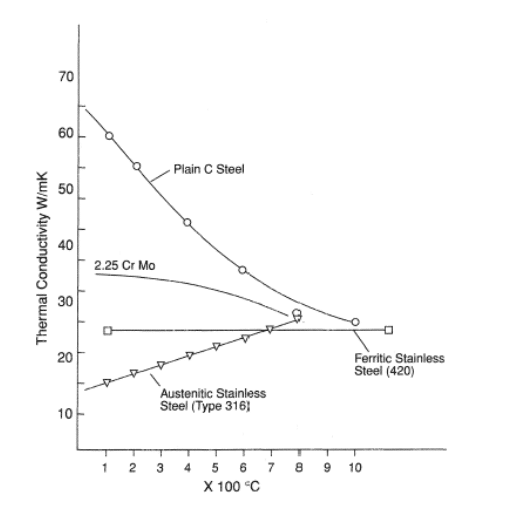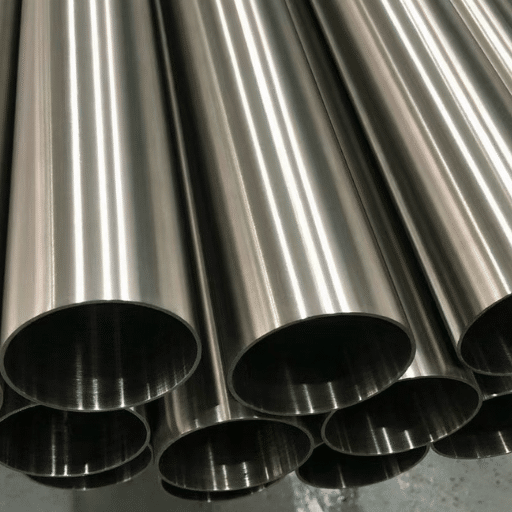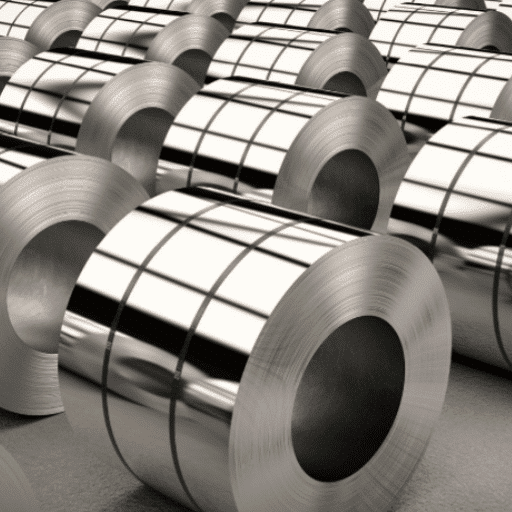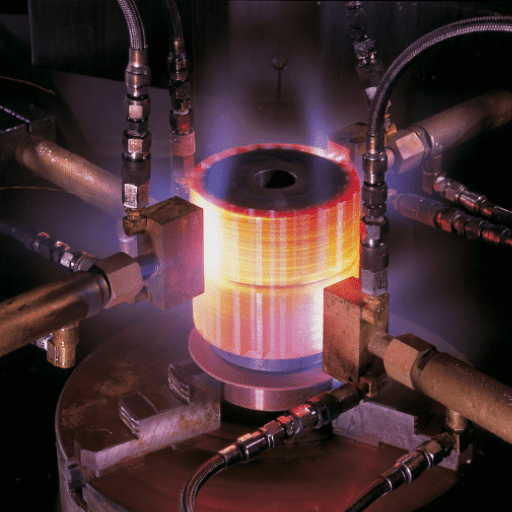The selection of metals for industrial, medical, or even personal applications always sees the debate of titanium versus stainless steel take center stage. These two materials are best known for their strength, durability, and versatility; however, how do they really compare, especially in regard to hardness? Knowing the individual properties of these metals is important for an engineer, manufacturer, or even an end-user in making a decision. This paper seeks to delve into titanium and stainless steel, discussing their compositions, strengths, and major differences with a particular emphasis on their hardness. Consider this comparison for aerospace engineering, medical implants, or high-performance tools so you can learn the pros and cons of each metal along the way.
Introduction to Titanium and Stainless Steel

Being two important metals for strength, durability, and corrosion resistance, titanium and stainless steel are usually mentioned in unison. Lightweight with very high corrosion resistance, titanium is chosen when there is a need for strength combined with low weight, such as in aerospace and orthopedic implants. Stainless steel brings along its great strength, flexibility, and cost-effectiveness, which lends itself to being used for construction, kitchenware, and industrial tools. The unique properties of each material lean into the application requirements for strength, weight, or cost.
Overview of Titanium
Titanium is an extraordinarily versatile and valuable metal with an excellent strength-to-weight ratio, corrosion resistance, and biocompatibility. Because it possesses unusual properties, it is favored in various industries from aerospace to medicine. Some key properties of titanium are given below:
Lightweight and Strong
Titanium has a density of around 4.5 g/cm³ and is nearly half as heavy as steel, yet it offers comparable strength. Therefore, it finds application in scenarios where being strong but too heavy should be avoided.
Corrosion Resistance
Seawater, chlorine, and other industrial chemicals do not corrode titanium. Thus, it finds application in the marine environment and chemical processing plants.
High Melting Point
It has a melting point of 1,668°C (3,034°F), so titanium can withstand extremely high temperatures, which allows it to be used even in extreme environments of jet engines and in space.
Biocompatible
Titanium is an apt consideration for medical implants such as hip surgery methods, dental implants, and prosthetics due to its non-toxicity and lack of reactivity with human beings.
Longevity and Durability
Titanium’s lasting quality guarantees prolonged functioning, even in violent environments, thereby giving very few chances for replacement and adding a factor of sustainability.
The said properties, along with that of new manufacturing methods of titanium, keep enhancing its applications and importance in modern industries.
Overview of Stainless Steel
Besides rust resistance and environmental durability, stainless steel is a name famous for its corrosion. Mainly consisting of iron, chromium, and nickel, stainless steel stands out for its ability to resist rust and corrosion in various environments. Below are the five properties succeeding as stainless steel detailing:
Corrosion Resistance
With at least 10.5% chromium, stainless steel has the ability to develop a thin oxide layer that resists corrosion by preventing the base metal from coming into contact with moisture or corrosive agents of any kind over time. This thin oxide layer is self-healing if damaged.
Strength and Durability
Being inherently strong, this corrosion-resistant alloy is often used in heavy-duty applications, in industrial machinery and hydraulic structures or offshore platforms where severe stress and temperature extremes are common.
Sanitizable and Hygienic
Due to its non-porous nature, it is very easy to clean and disinfect, making stainless steel the preferred product in food processing plants and hospitals.
Recyclability
Sustainability Champions
Since stainless steel is recyclable by 100%, it pushes the endeavors toward sustainability. It can be melted down and reused without compromising its qualities. This prevents the wastage of substances and unused materials and by-products against environmental care.
Being Attractive
The stainless steel finish boasts a sleek, modern appearance, which makes it popular in architectural and decorative applications, having the ability to maintain its shine even after long periods.
With these characteristics, stainless steel continues to play a vital role in so many industries: from construction and automotive to medical equipment and household goods. Its ability and versatility make it indispensable for modern technology and design.
Importance of Comparing Titanium vs Stainless Steel
In selection for industrial, medical, or construction purposes, titanium and stainless steel materials are worthy of comparison because of the very different properties and advantages associated with them. Recognizing those differences assists in making sure materials are selected for appropriate use. Let us go into the details with at least five factors worth considering:
Strength-to-Weight Ratio
Highest strength-to-weight ratio: Titanium ranks first. It is lighter and stronger than stainless steel and, hence, is mainly uses in aerospace or the implant industry where weight is of great concern but cannot compromise strength.
Corrosion Resistance
Both metals stand fair for corrosion resistance, but titanium does even better: Extremely aggressive environments, such as the marine or highly acidic, are sometimes challenging applications for stainless steel and its grades to endure without slight corrosive action over time.
Price
Titanium is more costly to produce and process compared to stainless steel. The unique benefits alone may not justify the price for cash-strapped projects.
Thermal Conductivity
In thermal conductivity, stainless steel thrives while titanium is the subject of weakness. In applications such as cookware or heat exchangers where heat transfer efficiency is a must, stainless steel takes centre stage.
Biocompatibility
Being highly biocompatible, titanium thus sounds like a perfect choice for surgical implants or prosthetics. While stainless steel can perform a variety of functions, it cannot necessarily meet certain medical standards.
Comparative Properties of Titanium and Stainless Steel

Concise Answer: Titanium is lighter, stronger by weight, and more corrosion-resistant, while stainless steel is heavier, more affordable, and easier to work with.
Summary Table:
|
Key Point |
Titanium |
Stainless Steel |
|---|---|---|
|
Weight |
Lighter |
Heavier |
|
Strength |
High (by weight) |
Moderate |
|
Corrosion Resist |
Excellent |
Good |
|
Durability |
High |
High |
|
Cost |
Expensive |
Affordable |
|
Workability |
Difficult |
Easy |
|
Hypoallergenic |
Yes |
Yes (if nickel-free) |
|
Applications |
Aerospace, Medical |
Construction, General |
Hardness Comparison: Titanium vs Stainless Steel
Concise Answer: Titanium is generally less hard but stronger by weight, while stainless steel offers higher hardness and better wear resistance depending on the alloy.
Summary Table:
|
Key Point |
Titanium |
Stainless Steel |
|---|---|---|
|
Hardness (HV) |
300-400 |
150-300 |
|
Strength |
High (by weight) |
Moderate |
|
Wear Resist |
Moderate |
High |
|
Corrosion Resist |
Excellent |
Good |
|
Weight |
Lighter |
Heavier |
|
Applications |
Aerospace, Medical |
Construction, General |
Strength and Durability of Titanium Alloys
Concise Answer: Titanium alloys offer an exceptional strength-to-weight ratio, high durability, and resistance to corrosion and cyclic stress, making them ideal for demanding applications.
Summary Table:
|
Key Point |
Titanium Alloys |
|---|---|
|
Tensile Strength |
275-590 MPa |
|
Yield Strength |
240-241 MPa |
|
Weight |
Lightweight |
|
Corrosion Resist |
Excellent |
|
Heat Resist |
High |
|
Durability |
Exceptional |
|
Applications |
Aerospace, Medical |
Corrosion Resistance of Titanium and Stainless Steel
Corrosion resistance is an important factor in material selection for several industrial applications. Even though both titanium and stainless steel exhibit corrosion resistance, they do so by mechanisms that depend on environmental conditions and chemical exposure. More key details and data about corrosion resistance are given below:
Titanium
For it is by the formation of a naturally existing oxide layer that titanium maintains its excellent corrosion resistance.
It resists chlorides, seawater, and acidic environments quite well, hence its popular use in marine and chemical applications.
Data shows that titanium preserves its integrity when exposed to environments within the pH range of 3-11.
It prevents crevice corrosion to a great extent, a form of corrosion prevalent to most other materials.
Stainless Steel
Corrosion of stainless steel is prevented by the presence of chromium in its composition, which forms an passive oxide film on the surface.
These stainless steel grades like 316 and 316L are highly resistant to pitting and crevice corrosion in chloride-rich environments.
In mildly acidic and alkaline conditions, stainless steel performs well, but it is less effective when exposed to concentrated acids.
Proper maintenance is required to safeguard the surface from corrosion and to keep it in good condition for a longer period.
Summary Table of Corrosion Resistance
|
Property |
Titanium |
Stainless Steel |
|---|---|---|
|
Oxide Layer Formation |
Natural |
Chromium-induced |
|
Chloride Resistance |
Excellent |
Good (Grade-specific) |
|
Acid Resistance |
Suitable (pH 3-11) |
Mild acids (with limitations) |
|
Surface Maintenance |
Minimal |
Necessary for enhanced longevity |
|
Pitting Resistance |
Outstanding |
Good (e.g., 316/316L grades) |
Applications of Titanium and Stainless Steel

Stainless steel and titanium are materials used in a wide array of industries, with their specific properties affording them different advantages for different applications. The following are five applications for each material:
Applications for Titanium:
Aerospace Use
The components of aircraft, spacecraft, and jet engines must be lightweight and strong with corrosion resistance.
Medical Implants
Its biocompatibility and resistance to bodily fluids make suitable materials to be used in the manufacture of orthopedic implants, dental implants, and surgical instruments.
Chemical Processing
The corrosive nature of the chemical forces makes titanium an excellent choice for heat exchangers, reactors, and chemical piping systems.
Marine Applications
Due to its extraordinary resistance to seawater corrosion, titanium is used for manufacturing propeller shafts, underwater equipments, and offshore structures.
Sports Equipment
Being light and strong, it finds use in the manufacture of high-end golf clubs, bikes, and racing car parts.
Category: Stainless Steel Applications
Construction
Being a durable stainless steel and considering environmental factors, the material is best used for architectural structural supports and cladding, roofing being a secondary consideration.
Food and Beverage Industry
Its hygienic property and corrosion resistance make stainless steel perfect for food processing equipment, storage tanks, and cutlery.
Automobile Industry
Used to a large extent for the manufacturing of exhaust systems, fuel tanks, and decorative trims due to its strength and resistance to corrosion.
Energy
Stainless steel finds application in power plants of all kinds, including nuclear and solar, resisting heat and pressure.
Medical Industry
Surface contact is suitable for sterilization of surgical instruments, including surgical tables and hospital equipment.
Industries Utilizing Titanium
Aerospace Industry
Titanium finds use in aircraft, spacecraft, and jet engines for its very high strength-to-weight ratio and ability to resist extreme temperatures.
Medical Field
Since titanium is biocompatible, it finds common use in the medical field for implants like joint implants, dental implants, and surgical instruments.
Automotive Sector
Titanium makes light and strong materials for a growing number of applications in performance vehicles, including exhausts, valves, and connecting rods.
Chemical Plant
The corrosion-resistant nature of titanium finds applications in the manufacture of chemical processing equipment such as heat exchangers, reaction vessels, and piping systems.
Energy Sector
By proving itself in rough environments and high-pressure applications, titanium is at the forefront of powering generation of geothermal, nuclear, and renewable energy sources.
Common Uses of Stainless Steel
Kitchenware and Cutlery
Its stain-resistant nature, durability, and hygienic atmosphere have kept stainless steel in kitchen utensil manufacture for many years. Nearly 70 percent of all stainless steel flatware and cutlery worldwide are made from grade 304 stainless steel.
Construction and Architecture
In modern architecture, stainless steel is often used in building facades, railings, columns, and roofing. Strong and sturdy, it resists weathering and low maintenance, ideal in structures meant to last and weather. The very top of the Chrysler Building, for example, is made of stainless steel.
Medical Equipment and Tools
Being sterile and biocompatible, stainless steel makes surgical instruments, implants, and other medical devices. To enhance performance and ensure safety, about 60% of surgical-grade stainless steel is used in medical instruments.
Transportation
Give automotive panels, stainless steel is widely used for train carriages and airplane components due to its excellent strength-to-weight ratio, deformation resistance, and long life. High-performance stainless steel grades are used for manufacturing exhaust systems, fuel tanks, and structural components.
Industrial Applications
Chemical processing, production of oil and gas, and food processing are industrial applications where stainless steel is highly important. It can resist extreme temperatures, high pressure, and corrosive environments, making it useful as a material for heat exchangers, storage tanks, and pipelines, etc.
When to Choose Titanium vs Stainless Steel
Choosing between titanium and stainless steel depends on the specific requirements of your application. Both materials possess properties suited to certain uses. Four considerations are detailed below, plus an additional key point, to help guide you:
Corrosion Resistance
Titanium resists corrosion much better, especially in very corrosive environs, such as seawater and chemical exposure. Stainless steel, being resistant to rust and oxidation, does not necessarily offer the same level of protection as titanium under extreme conditions.
Strength-to-Weight Ratio
Titanium possesses an immensely higher strength-to-weight ratio when compared to stainless steel. This feature makes it extremely attractive when the weight of the element must be kept to a minimum, such as in aerospace or automotive applications.
Temperature Tolerance
Titanium retains its strength at higher temperatures than stainless steel and is thus better for high-temperature settings such as jet engines or heat exchangers. Stainless steel, on the other hand, suits applications of moderate temperatures due to its cost factor.
Cost and Availability
Most of the time, stainless steel is priced lower and more available than titanium. Stainless steel would be the apt choice when funds are limited. Titanium, on the other hand, goes for a premium, imparting a premium-level performance for niche requirements.
Bio-Compatibility
Titanium possesses excellent bio-compatibility and is therefore an ideal material for medical implants and devices. Stainless steel is also used for medical purposes but is found to be less bio-compatible when judged against titanium.
Looking into these variables shall allow for choosing a material best suited to the requirements of your project or industry.
Pros and Cons of Titanium and Stainless Steel

High Strength-to-Weight Ratio
Titanium is very much strong and light, which gives it an upper hand in aerospace and medical and automotive applications.
Excellent Corrosion Resistance
Titanium is distinctly resistant to corrosion from saltwater, acids, and other aggressive agents, standing tall in the face of extreme conditions.
Biocompatibility
Due to its high biocompatibility, titanium is suitable for medical uses like implants and prostheses.
High-Temperature Tolerance
Titanium can withstand very high temperatures, in situations where strength and integrity cannot be compromised at extremely high heat.
Long Life
Due to its durability, titanium can stand the test of time much longer than common materials, thereby diminishing the necessity for replacement.
Cons of Titanium
Expensive Material and Processing Costs
Due to its complex production process, titanium is costly to extract and manufacture.
Less Availability
Compared to stainless steel, titanium is of less common availability, and accordingly, lead times in manufacturing can extend.
Machining Difficult
Hard to be machined and shaped, Titanium tends to come with a higher cost of production.
Low Fatigue Strength
When held under longer-period stress, Titanium may not perform as well as stainless steel in a few applications.
Lower Availability in Structural Grades
Titanium alternatives for structural use are more limited compared to stainless steel, which has a broader range of grades.
Pros of Stainless Steel
Cost-Effective
Stainless steel is relatively cheaper than titanium, being a budget-friendly option for most projects.
Strength and Durability
Stainless steel offers good strength and durability under a wide variety of conditions.
Availability
The material is considered to be widely available worldwide hence very accessible to many industries.
Range of Grades
Stainless steel is available in a multitude of grades, each suited for specific applications, such as offering higher corrosion resistance or mechanical strength.
Ease of Fabrication
Stainless steels are relatively easy to machine, weld, and form, and thus pose fewer challenges to manufacturing.
Cons of Stainless Steel
Susceptible to Corrosion under Harsh Environment
Stainless steel can undergo corrosion under a very harsh environment or saltwater, unlike titanium.
Heavy Weightage
The stainless steel is much heavier compared to titanium, thus unwanted in the area where weight lies in considerations.
Low Biocompatibility
Although appropriate for many medical applications, stainless steel may cause allergic reactions in some instances, contrary to titanium.
Maintenance Needed
If unmatched care is given to this metal over time, it loses its aesthetic beauty, which is more prone to staining.
Heat Sensitivity
With high temperatures, stainless steel can deform or be weakened, unlike titanium, which has better performance in such conditions.
Advantages of Titanium
Exceptional Strength-to-Weight Ratio
One of the titan’s qualities, so to speak, is that it has a high strength-to-weight ratio, offering almost as much strength as steel and weighing almost half as much. This property makes it suitable in aerospace and biomedical industries, where weight reduction is of utmost consequence.
Corrosion Resistance
Titanium is an excellent corrosion-resistant metal. It offers its resistance even against extremely corrosive agents such as seawater, chlorine, and acidic conditions. This makes for longer durability and hence ideal applications in the marine and chemical industries.
Biocompatibility
Titanium is, hence, biocompatible and toxic-free, making itn to be the most sought-after material for medical implants, including joint replacements and dental implants. It bonds well with human tissue, thereby reducing the risk of rejection and infection.
High-Temperature Performance
Higher than other metals, titanium can resist extreme temperatures while maintaining its structural integrity. It holds its strength and characteristics for environments up to 800°F (427°C), which makes it vital in aerospace and high-performance engineering.
Low Thermal Expansion
Titanium has a low thermal expansion coefficient, implying that it does not markedly expand or contract with changes in temperature. This property guarantees their performance and durability in precision engineering applications like space and advanced manufacturing.
Disadvantages of Titanium
High Cost
Titanium ranks among the most expensive metals to produce due to complex extraction and refinement processes. For one, to produce titanium via the Kroll process is quite resource-intensive because it needs high energy consumption and the use of specialized machinery, which in turn translates to higher production costs as compared to other metals like aluminum and steel.
Brittle at Low Temperatures
Titanium retains its strength at high temperatures but at extremely low or cryogenic temperatures, however, it becomes brittle and loses ductility. That turns out to be a rather important limitation because performance and reliability are supposed to be guaranteed under cryogenic temperatures in such applications.
Difficult to Machine
While titanium proves to be very hard and strong in many applications, using it is not an easy task. Grinding and machining the metal is expensive due to its low thermal conductivity as it leads to premature tool wear and shorter tool life.
Galling Prone
Titanium possesses a high tendency to gall, whereby metal surfaces adhere to each other under pressure, causing wear. This property could be a concern in any surface contact-bearing interaction, such as in threaded connections or sliding supports.
Limited Availability
Being an abundant element in the Earth’s crust, titanium extraction is nevertheless complicated, with the availability of good-grade titanium for industrial usage consequently being scarce. This scarcity generally gives birth to a series of supply chain-related problems in industries that require large amounts of titanium.
Pros and Cons of Stainless Steel
Resistance to Corrosion
Because it’s corrosion-resistant, stainless steel is an excellent choice on a basis involving moisture, chemicals, and varying weather conditions. For example, steel grades 304 and 316 are very popular due to their special marine and industrial resistance.
Durability and Strength
Noting tensile strength and durability, the alloy we speak about is resisting heavy wearing and is therefore used in various applications from construction to kitchenware. For instance, stainless steel maintains its structural properties in high as well as low temperatures.
Low Maintenance
Stainless steel consists of an oxide layer protecting it from rusting and staining, which is what makes it require less maintenance. Cleaning usually means just wiping it with a cloth or with water. This simple care requires less time and resources in the long run.
Recyclability
Recycling criteria placed upon stainless steel make it an eco-friendly material. Industry studies have revealed that nearly 80% of stainless steel is recycled at the end of life, thus fostering the concept of sustainability.
Aesthetic Appeal
Design-wise, the slick and modern look of stainless steel has served commercial and residential projects well. It has the smooth finish that can be styled differently, making it even more favored for interior purposes.
Cons
Expensive
Stainless steel comes at a higher price compared to other metals like aluminum or carbon steel. The chromium content and manufacturing procedure further complicate the matter of saving costs in projects with limited financial resources.
Prone to Scratches and Dents
Being durable, this property makes it a little susceptible to scratches and dents. High traffic and usage during the day could, without proper care, easily destroy the beauty of its polished look.
For its weight, stainless steel is almost like a commodity compared to aluminum. Such heavier materials could disadvantage those applications that need light materials, like transport or aerospace.
Thermal Conductivity
It has low thermal conductivity compared to other metals, such as copper or aluminum. This can be a problem in heat transfer applications since stainless steel will not perform that well.
Fabrication Difficulties
Untwisting and workpiece cannot be done easily on stainless steel just because it is hard. It is right to say that special tools and methods might be required, so you get to spend more time and money in production.
Conclusion: Which is Better – Titanium or Stainless Steel?

Choosing titanium over stainless steel or vice versa always depends on the intended use and the requirements involved. According to the latest insights and data, titanium, having a very strong strength-to-weight ratio, corrosion-resistant and biocompatible, is very suitable for aerospace, medical implants, and sports equipment. Stainless steel, in contrast, has probably gained popularity because of its relatively cheap price, ease of manufacture, and wide applicability in general purposes like construction, kitchenware, and automotive parts.
Than weight and resistance to extreme environments, titanium would be the option worthy of more consideration, despite the price premium asked for. On the other hand, in those circumstances where the chief considerations are budget constraints and ease of manufacture, stainless steel would prove to be the more realistic choice. When assessing the specific needs of your project, you will be able to assess and decide on a material that will best fit your expectations.
Summary of Key Differences
- Weight: Titanium is much lighter than stainless steel, making it ideal for applications where weight is a critical factor.
- Strength and Durability: Both materials are strong, but titanium excels in extreme environments, resisting corrosion and high temperatures better than stainless steel.
- Cost: Titanium is more expensive, while stainless steel is a more budget-friendly option.
- Ease of Manufacturing: Stainless steel is easier to work with and more widely available for everyday applications.
Based on these differences, I would choose titanium if weight and durability in harsh conditions are my top priorities. However, for cost-effectiveness and general usability, stainless steel would be my choice.
Final Thoughts on Titanium vs Stainless Steel
Several distinct factors are at the source of differences between titanium and stainless steel. Below are five key details and data points that should be considered when deciding which material can best serve a particular use:
Strength-to-Weight-to-Weight Ratio: Titanium, with its extraordinary strength-to-weight ratio, furnishes the lightweight durability required in aerospace and pharmaceutical applications. Stainless steel is strong, but on the other hand, it is greater in weight and perhaps not so good for weight-related applications.
Corrosion Resistance: Titanium docks far better in corrosion resistance, whether in extreme environments such as saltwater or acidic conditions. Stainless steel retains resistance against corrosion as well but could fare less well down the pipeline of highly corrosive environments compared to titanium. Thermal Conductivity: Stainless steel has more capacity for thermal conductivity, so it may be preferred in applications involving heat transfer like cookware or heat exchangers. Due to its lower conductivity, titanium may find itself having to take a backseat in such applications.
Metal Price: Titanium is a far pricier metal than stainless steel. Titanium’s price is pushed higher because of the complexity in its extraction and processing, while stainless steel is, in fact, more common and thus preferred for large projects.
Application-Dependent Usability: Titanium is best suited for highly specialized uses for example, biomedical implants and high-performance aerospace components due to biocompatibility and strength-to-weight ratio. In contrast, stainless steel is versatile and tends to be freely available; it finds applications in construction, kitchenware, etc.
Being knowledgeable about these factors helps in making an informed decision regarding the choice between materials to reach a balance among weight, performance, cost, and environmental resistance for the long-term application.
References
- The Use of Titanium and Stainless Steel in Fracture Fixation
Taylor & Francis Online – A study comparing the applications and properties of titanium and stainless steel in medical fracture fixation. - Difference in Metallic Wear Distribution Released from Titanium vs Stainless Steel Plates
Springer – Research on corrosion and metal release rates between titanium and stainless steel. - A Comparison Between the Corrosion Characteristics of 316 Stainless Steel and Titanium
ScienceDirect – A detailed study on the corrosion characteristics of stainless steel and titanium.
Frequently Asked Questions (FAQ)
Is titanium stronger than stainless steel?
Titanium is generally considered to be stronger than stainless steel in terms of tensile strength. However, the actual strength can vary based on the specific grades of titanium and stainless steel being compared. For example, grade 5 titanium has a higher strength-to-weight ratio compared to many stainless steel grades, making it a preferred choice in applications where weight is a concern.
What are the differences between titanium and stainless steel?
The primary difference between titanium and stainless steel lies in their properties. Titanium is lighter than stainless steel and has higher corrosion resistance. Stainless steel, on the other hand, is typically stronger and more affordable, which makes it a common choice for various industrial applications. Additionally, titanium has a higher melting point and is more difficult to machine than stainless steel.
What are the pros and cons of titanium vs stainless steel?
When choosing between titanium and stainless steel, it’s important to consider the pros and cons. Titanium is lighter than stainless steel and offers excellent corrosion resistance, making it ideal for applications in harsh environments. However, it is generally more expensive and harder to machine. Stainless steel, particularly austenitic stainless steel, is more affordable and easier to work with, but it may not perform as well in extreme conditions.
How do the grades of titanium compare to stainless steel grades?
There are several grades of titanium, with grade 5 titanium being one of the most commonly used due to its excellent strength and lightweight properties. In comparison, stainless steel grades vary, with martensitic and duplex stainless steels offering different levels of strength and corrosion resistance. The choice between these materials often depends on the specific requirements of the project.
Which is better for machining: stainless steel or titanium?
Stainless steel is generally easier to machine compared to titanium. This is due to its lower hardness and better machinability, especially in grades designed for machining. Titanium can be more challenging to work with due to its strength and tendency to generate heat during machining, which can lead to tool wear.
Is titanium or stainless steel a better choice for medical implants?
Titanium is often the preferred choice for medical implants due to its biocompatibility and resistance to corrosion. It is lighter than stainless steel and integrates well with bone, making it suitable for long-term applications within the human body. Stainless steel can also be used, but it may not offer the same level of performance in demanding medical environments.
What is the difference between stainless steel and titanium in terms of weight?
Titanium is significantly lighter than stainless steel, which can be a critical factor in applications where weight reduction is essential, such as the aerospace and automotive industries. For instance, titanium is about 45% lighter than stainless steel, allowing for designs that maintain strength while reducing overall weight.
Can titanium be welded like stainless steel?
Yes, titanium can be welded, but the process is different from welding stainless steel. Titanium requires a controlled atmosphere to prevent contamination during welding, while stainless steel can be welded in open air with proper techniques. The welding of titanium often involves specialized equipment and techniques to ensure the integrity of the weld.

